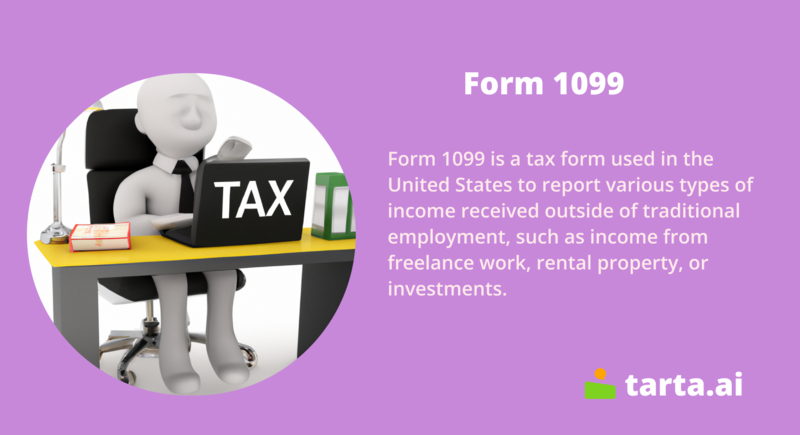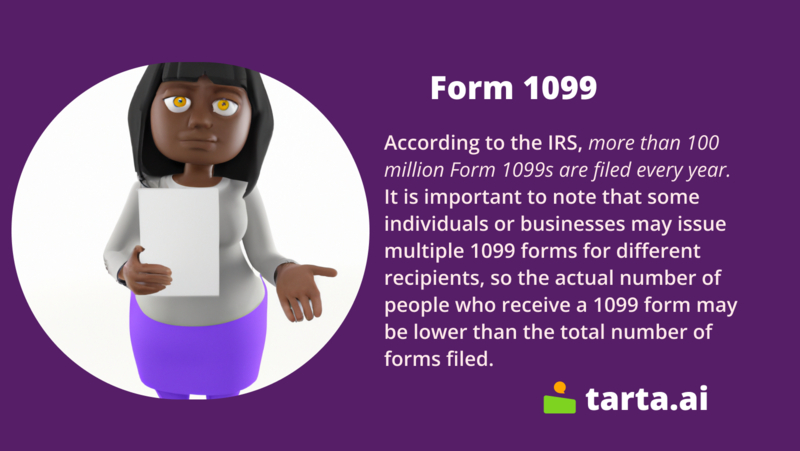What is the Purpose of Form 1099?

The purpose of Form 1099 is to report the income to the IRS and to the recipient of the income. There are many different types of Form 1099, each used to report a different type of income, such as Form 1099-MISC for non-employee compensation, Form 1099-INT for interest income, and Form 1099-DIV for dividends. The recipient of the income must include the information reported on Form 1099 when filing their annual income tax return.
What are the types of Form 1099?
Income comes in many forms, and it's important to accurately report each type to the IRS. That's where Form 1099 comes in - a series of forms used to report various types of income and payments. From non-employee compensation to interest income, dividend income, and even cancelled debts, each Form 1099 serves a specific purpose. These forms help ensure that individuals and businesses report their income correctly, and avoid any potential issues with the IRS. So whether you're a freelancer, investor, or retiree, understanding the different types of Form 1099 can be crucial in staying on top of your taxes.
There are many different types of Form 1099, each used to report a different type of income. Here are some of the most common types of Form 1099:
- Form 1099-MISC: Used to report non-employee compensation, such as payments made to independent contractors, freelancers, or consultants.
Note
One peculiarity of Form 1099-MISC is that it is used to report a wide variety of payments made to non-employees, not just for services rendered.
- Form 1099-INT: Used to report interest income, such as interest earned on a bank account or a loan.
- Form 1099-DIV: Used to report dividend income, such as income earned from stocks or mutual funds.
- Form 1099-G: Used to report government payments, such as unemployment compensation or tax refunds.
- Form 1099-S: Used to report proceeds from real estate transactions, such as the sale of a home.
- Form 1099-R: Used to report distributions from retirement accounts, such as a 401(k) or IRA.
- Form 1099-C: Used to report cancelled debts, such as the forgiveness of a loan.
There are many other types of Form 1099 as well, each used to report a specific type of income or payment. It's important to use the correct form when reporting income to the IRS.
Who receives Form 1099?
Form 1099 is typically issued by businesses or organizations that have paid certain types of income to an individual or entity during the tax year. The most common type of recipient is an independent contractor or freelancer who has provided services to a business. Other examples of individuals or entities that may receive Form 1099 include individuals who have received interest or dividend income, those who have received unemployment compensation or a tax refund from the government, and those who have sold real estate or received distributions from a retirement account. It's important to note that not everyone who receives income will receive a Form 1099, as there are certain thresholds and criteria that must be met. Ultimately, it's the responsibility of the payer to determine whether a Form 1099 is required and to issue it to the appropriate recipient.

What is the Deadline for filing Form 1099?
The deadline for filing Form 1099 depends on the type of income being reported and whether it is being filed on paper or electronically.
For most types of Form 1099, including Form 1099-MISC and Form 1099-INT, the deadline to provide the form to the recipient is January 31st of the year following the tax year. For example, if you paid an independent contractor $5,000 in 2022, you would need to provide them with a Form 1099-MISC by January 31, 2023.
The deadline to file Form 1099 with the IRS varies based on whether the form is being filed on paper or electronically, as well as whether the form includes certain types of income. For paper filings, the deadline is typically February 28th of the year following the tax year. For electronic filings, the deadline is typically March 31st of the year following the tax year.
It's important to note that failure to file Form 1099 by the applicable deadline can result in penalties and fines from the IRS. Therefore, it's crucial to ensure that you file the form on time and accurately report the income being reported.
Penalties for non-compliance
Failing to comply with the requirements for Form 1099 can result in penalties and fines from the IRS. The penalties vary depending on the severity and length of the non-compliance.
For example, if you fail to file a correct and timely Form 1099, you may be subject to a penalty of $50 per form if you file within 30 days of the due date, with a maximum penalty of $565,000 per year. If you file more than 30 days after the due date but before August 1st, the penalty increases to $110 per form, with a maximum penalty of $1,696,000 per year. If you file after August 1st or don't file at all, the penalty increases to $280 per form, with no maximum penalty.
In addition to penalties for failing to file or filing late, there are also penalties for failing to include all required information on the Form 1099, failing to provide a copy of the form to the recipient, and filing on paper when you were required to file electronically.
It's important to note that these penalties can add up quickly and result in significant costs for businesses or individuals who fail to comply with Form 1099 requirements. Therefore, it's crucial to ensure that you file the form accurately and on time to avoid any potential penalties or fines from the IRS.
Tips for filing Form 1099
Filing Form 1099 can be a complex and time-consuming process, but there are several tips that can help simplify the process and reduce the risk of errors or penalties. Here are a few tips for filing Form 1099:
- Gather all necessary information: Make sure you have accurate and complete information for each recipient, including their name, address, and taxpayer identification number (TIN). You may need to request this information from the recipient if you don't already have it on file.
- Use the correct form: There are several different types of Form 1099, each used to report a different type of income. Make sure you use the correct form for the type of income being reported.
- Verify the filing requirements: Not all payments require a Form 1099 to be filed. Check the IRS guidelines to determine whether a Form 1099 is required for the type of payment being made.
- Check the deadlines: As mentioned earlier, the deadline for filing Form 1099 varies depending on the type of income being reported and whether it is being filed on paper or electronically. Make sure you know the deadlines and file the form on time.
- Double-check for accuracy: Before submitting the Form 1099, double-check all information to ensure it is accurate and complete. Errors or omissions can result in penalties or delays in processing.
- Consider using a software or service: There are several software and service providers that can help simplify the Form 1099 filing process. These tools can help automate the process, reduce the risk of errors, and ensure compliance with IRS guidelines.
NOTE
One disadvantage of the Form 1099 is that it requires additional administrative work for businesses or individuals who are required to issue the form. The process of gathering information about non-employees, such as their name, address, and tax identification number, can be time-consuming and may require additional record-keeping.
By following these tips, you can help ensure that your Form 1099 filings are accurate, complete, and submitted on time, reducing the risk of penalties or fines from the IRS.
- Form 1099 is used to report income received from various sources, such as freelance work, contract work, and investment income.
- There are many different types of Form 1099, each corresponding to a specific type of income.
- If you receive a Form 1099, you must report the income listed on the form on your tax return.
- If you fail to report income listed on a Form 1099, you could be subject to penalties and interest.
- If you are self-employed or receive income from a contract or freelance work, you may need to issue Form 1099s to people who work for you.
- If you are a business owner, you may be required to file Form 1099s with the IRS and send copies to the individuals or companies you paid.
- It is important to keep accurate records of all income and Form 1099s received or issued to ensure that you comply with tax laws and regulations.
FAQ
What is the deadline for issuing Form 1099 to recipients?
The deadline for issuing most types of Form 1099 is January 31st of the year following the tax year in which the income was paid. However, some forms, such as Form 1099-B for broker transactions, have different deadlines.
Do I need to report all types of income on Form 1099?
No, not all types of income need to be reported on Form 1099. Only certain types of income, such as payments made for services performed by independent contractors, need to be reported on Form 1099.
What happens if I don't receive a Form 1099 that I am expecting?
If you don't receive a Form 1099 that you are expecting, you should reach out to the person or company who paid you and ask if they have issued the form. If they have not issued the form, you may still need to report the income on your tax return.
Can I file my tax return without a Form 1099?
Yes, you can file your tax return without a Form 1099. You can use other records, such as invoices or bank statements, to determine the amount of income you received and report it on your tax return.
How do I issue a Form 1099 to a contractor or freelancer that I paid?
To issue a Form 1099 to a contractor or freelancer that you paid, you will need to obtain their tax identification number (TIN) and complete Form 1099-MISC. You will also need to send a copy of the form to the IRS and the recipient.